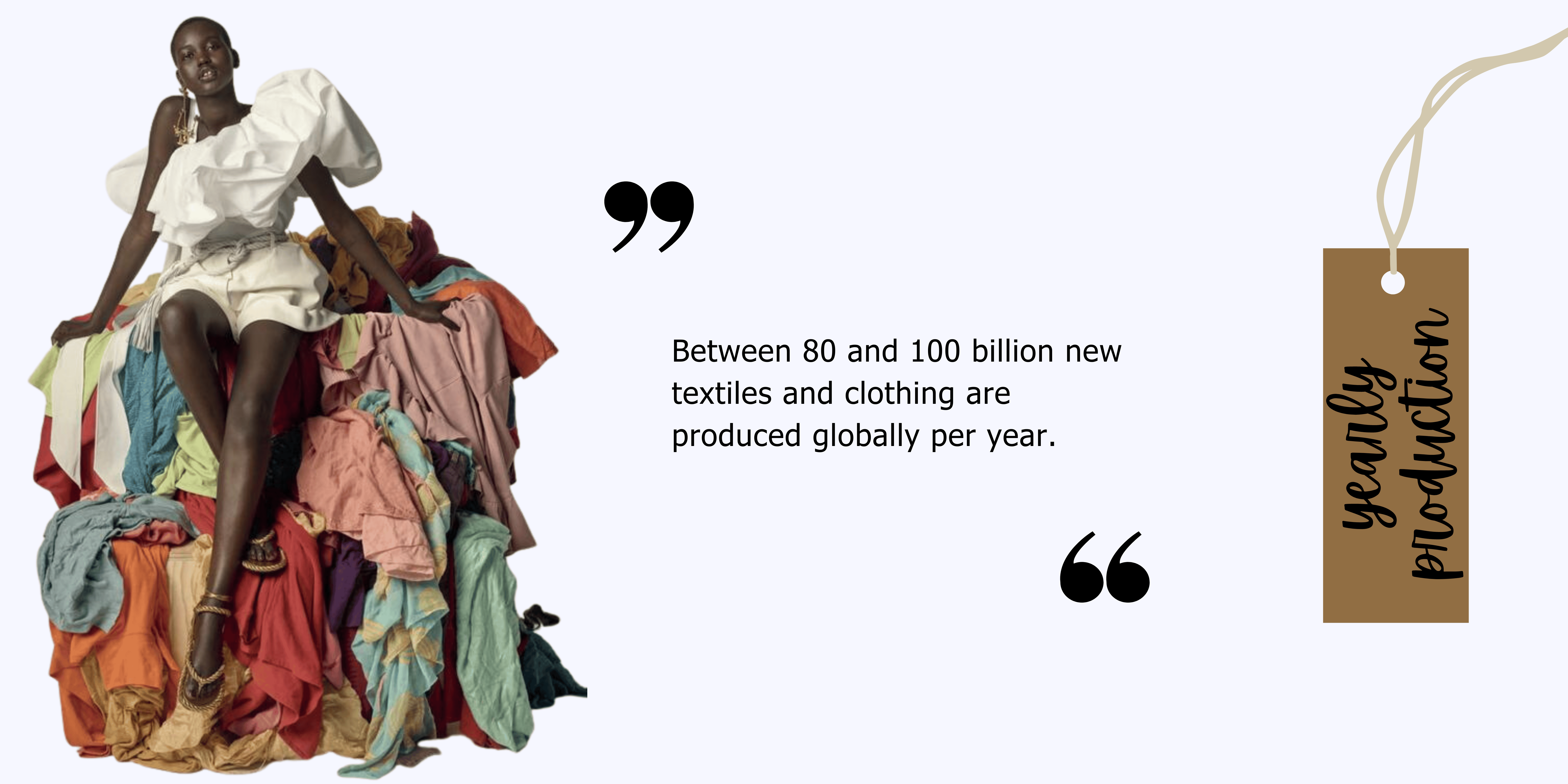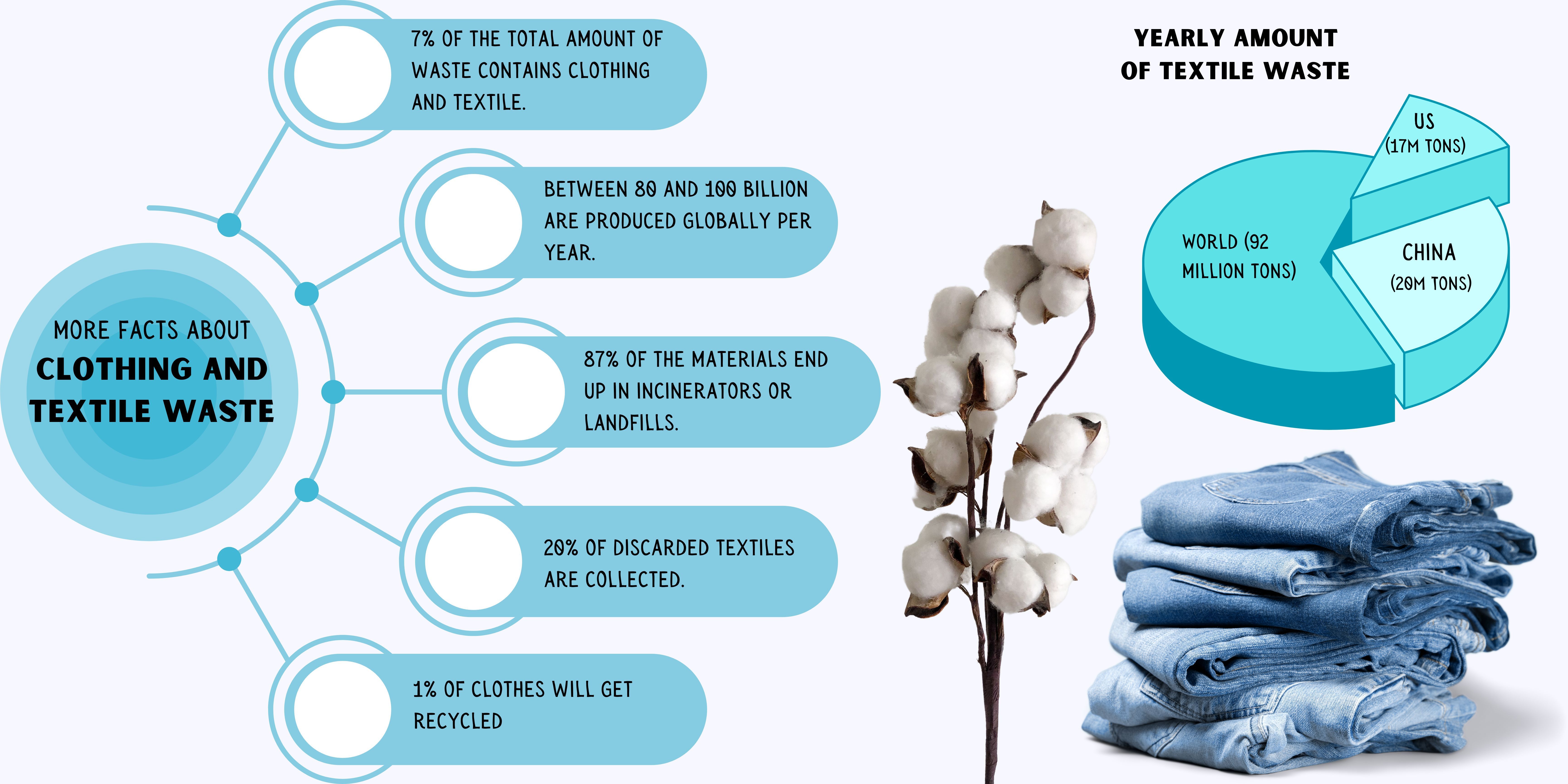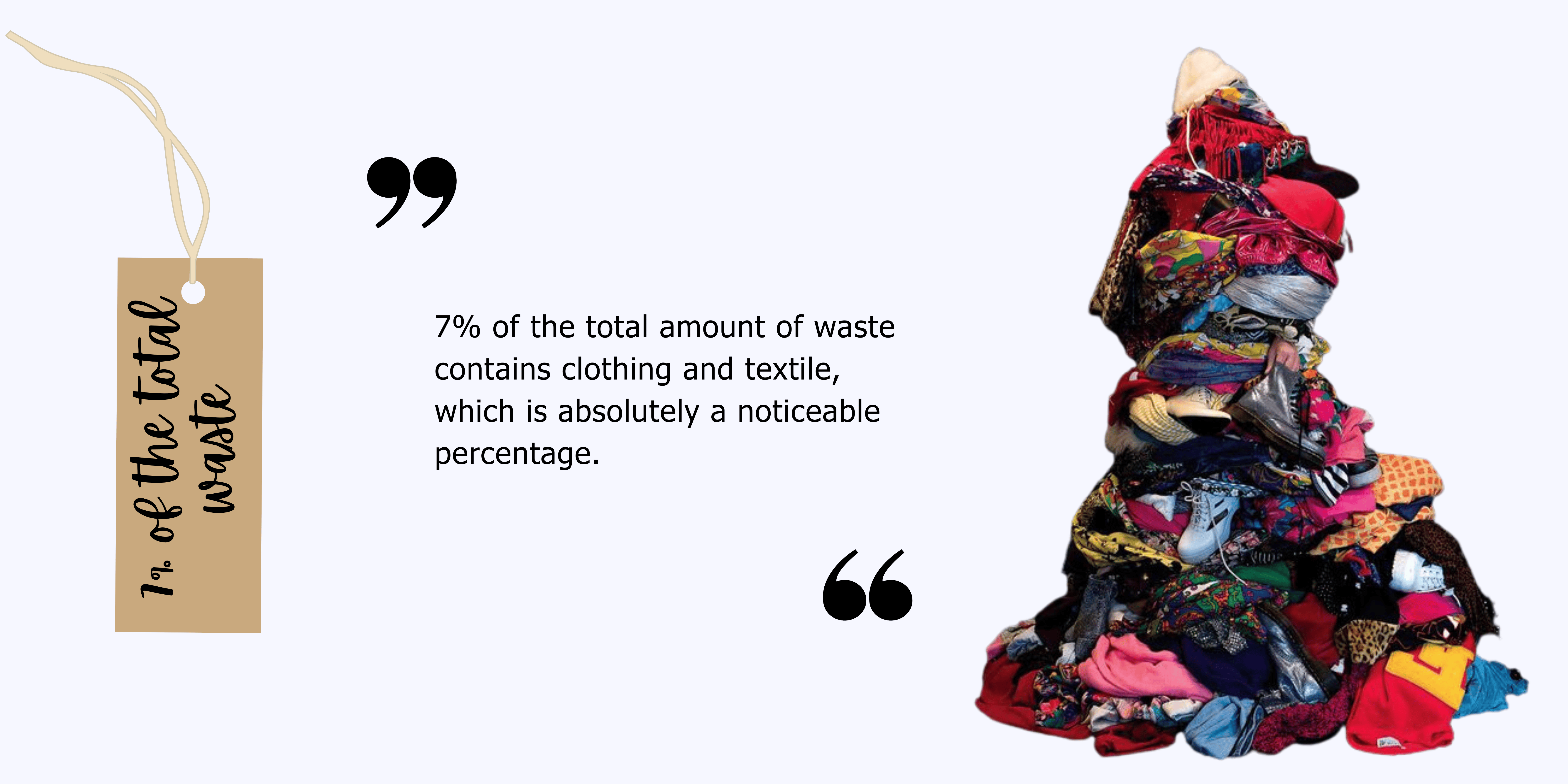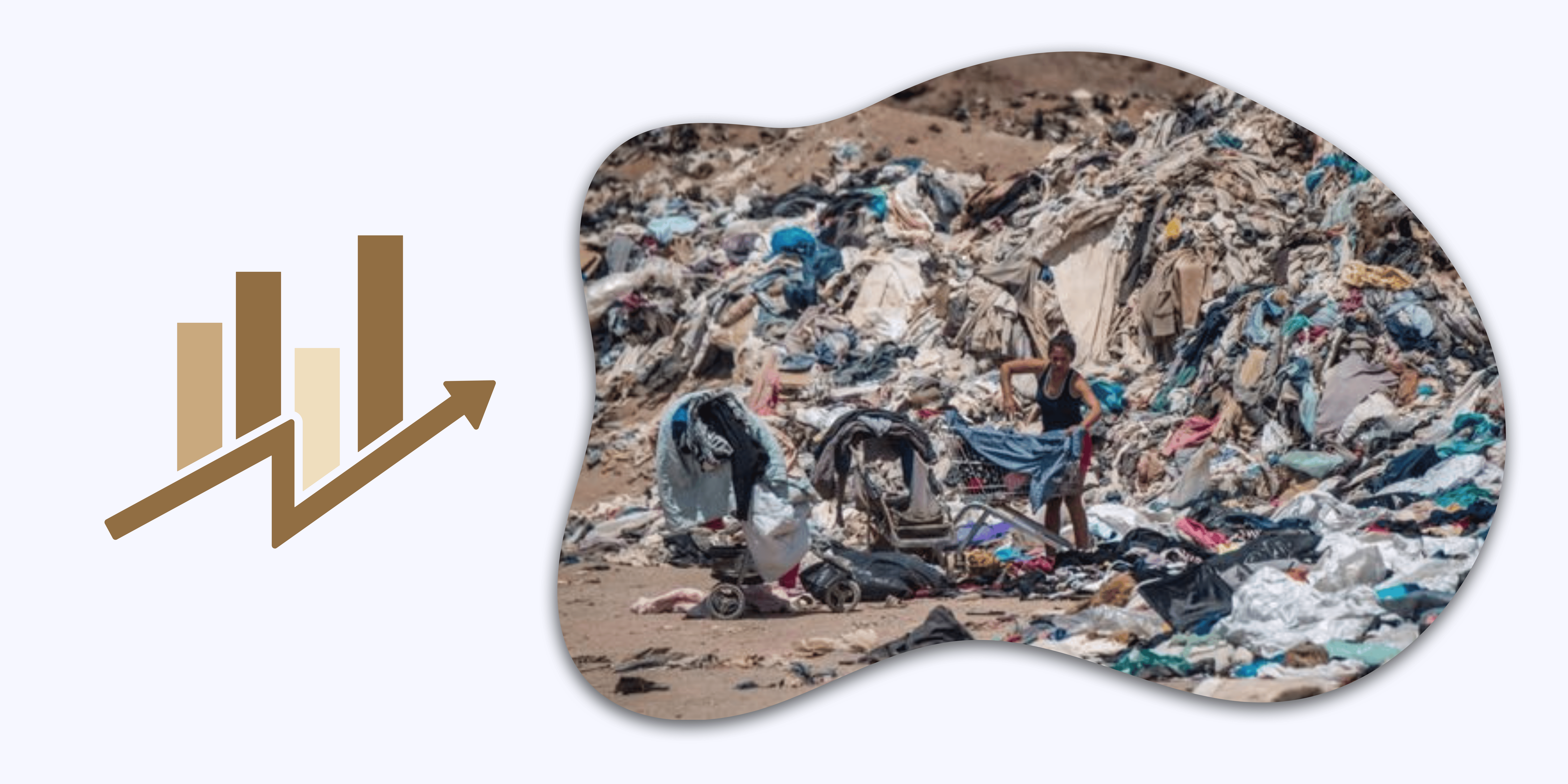
Textile Waste And Sustainable Solutions
In the ever-evolving landscape of sustainable fashion, a quiet storm gathers momentum – a storm cast in the form of burgeoning textile waste. In a world enamored with the rapid cadence of trends and the allure of novel styles, a pressing concern emerges: the relentless discarding of clothing. The very garments that grace our bodies for fleeting moments find themselves relegated to an uncertain fate, piling upon one another in landfills, their stories truncated prematurely. This phenomenon beckons us to embark on a journey through the intricate folds of an environmental predicament that demands our unwavering attention.
Consider this: a staggering 17 million tons of clothing are consigned to the waste stream annually in the United States alone – an unsettling statistic that has doubled within a mere two decades. What precipitates this escalating trend, and at what cost does it come? As we thread our way through the fabric of this article, we will unravel the intricate layers of the textile waste conundrum, exposing its far-reaching implications and inquiring into the harmony of our coexistence with the planet.
Are we poised on the brink of a fashion reckoning, where the garments we adore exact an unforeseen toll on the delicate balance of nature? As we delve deeper, we will traverse the landscapes of fast fashion's ascendancy, tracing the contours of its rise and its implications for both our wardrobes and the environment. Our journey will take us into the hidden folds of water scarcity, chemical saturation, and carbon footprints woven into the fabric of our everyday attire.
Definition of Textile Waste
Textile waste refers to the material that is discarded at various stages of the production process within the realm of textiles. This waste can originate at every step of creating a textile product, spanning from the initial stages of spinning and weaving, all the way through dyeing, finishing, and even beyond its completion. This waste might arise unintentionally due to various factors or might be deliberately generated with the goal of enhancing efficiency in the production chain.
Rising Textile Waste and Its Alarming Impact
Amidst the fast-paced world of fashion, there's a big issue we need to talk about – the overwhelming rise of textile waste. Think about it: clothes are being tossed aside faster than ever before, creating a massive environmental problem that's hard to ignore. Our insatiable appetite for the latest trends has led to an astonishing annual disposal of garments in America, reaching an unprecedented 17 million tons – a disheartening figure that has doubled within a mere two decades. This mounting pile of discarded fabrics paints a vivid picture of the complex web we've woven, where style meets sustainability, and our choices resonate far beyond the realm of fashion.
Within this labyrinth of threads and fabrics, a deeper narrative unfolds, one intricately linked to the delicate balance of our planet. As we try to figure out this complex textile puzzle, it's really important to understand the environmental impact that's woven into the fabric itself. The discarded textiles tell tales of a resource-intensive journey, from cultivation to production, each step leaving an indelible mark on the environment. From the water-intensive growth of cotton fields to the energy-intensive factories that bring our clothes to life, the entire lifecycle of our garments is intertwined with a profound environmental footprint.
Moreover, this escalating trend of textile waste is not confined to the United States alone; it resonates globally, reverberating through fashion capitals and textile hubs alike. The very essence of fast fashion – a frenetic cycle of producing and discarding – has embedded itself deeply into our cultural psyche. In our pursuit of the latest and the trendiest, we have inadvertently sewn a fabric of consequences that extends far beyond our immediate surroundings.
As we stand at this crossroads of fashion and environmental stewardship, we embark on a journey that probes not only the depths of our closets but also the intricacies of our global ecosystem. Our exploration will delve into the water-thirsty processes that drench our garments in their vibrant hues and the chemical-laden finishes that grace our attire. We'll peel back the layers to expose the greenhouse gas emissions woven into each fiber and the insidious journey of microplastics from our closets to the oceans.

Fast Fashion: A Catalyst for Textile Waste
At the epicenter of the textile waste maelstrom stands the phenomenon of fast fashion. This rapidly spinning cycle churns out new styles at remarkably affordable prices, enticing consumers into a relentless loop of purchase and disposal. The gears of this industry turn incessantly, driven by a desire to align with ever-shifting fashion trends. However, this accelerated pace of production has sown the seeds of a disconcerting reality – a culture of disposability.
In the wake of this enticing affordability, a complex ecosystem of textile production comes to life. It's a world where designs materialize swiftly, and garments hit the racks in the blink of an eye, making runway trends accessible to the masses within weeks. As the consumer base grows ever more diverse and discerning, the pressure intensifies to deliver an array of options, each a reflection of the zeitgeist. This dance of supply and demand births a dizzying array of clothing that captures the imagination and fills wardrobes, but it also paints a worrisome portrait of a culture that values novelty over longevity.
Yet, beneath the allure of these seemingly unbeatable prices lies an unsettling truth – the proliferation of this culture of disposability. The allure of acquiring a new ensemble for every occasion contributes to a throwaway mentality, where garments are deemed expendable after a mere handful of wears. In this cycle, durability and craftsmanship often fall by the wayside, as the relentless pursuit of the next trend prevails. This culture echoes through the very fabric of our society, encouraging a sense of detachment from the garments we wear and the resources invested in their creation.
As the winds of fashion trends gust in one direction and then another, the fashion industry's carbon footprint grows deeper. The overworked machinery of production plants hums relentlessly, expelling greenhouse gases and consuming copious amounts of energy. The waterlogged fields that yield cotton for our attire divert precious resources, while the chemical dyes that lend vibrancy to fabrics taint waterways with their toxic embrace.
In the midst of all this hustle and bustle of fast fashion, we often overlook the connection between our shopping sprees and the environmental impact that follows. Our desire to stay trendy blinds us to the far-reaching consequences that affect our planet. But if we take a moment to peek behind the curtain, we'll uncover a whole new story – one that urges us to think about the true cost of chasing fleeting fashion fads. So, let's embark on this journey together, exploring the world of fast fashion and shedding light on the threads that shape our modern existence. We'll uncover the patterns of how we buy, waste, and strive for a more sustainable future.
The Ecological Toll of Textile Production and Disposal
Beneath the surface of each textile lies an intricate tapestry of resource-intensive processes. The production of textiles exacts a significant environmental toll, demanding copious volumes of water, energy, and chemicals. As we unravel the layers of this complex creation, we uncover a startling statistic that underscores the enormity of the issue at hand – a single cotton shirt engulfs an astonishing 2,700 liters of water. This striking revelation vividly paints the picture of a relentless demand for resources, one that places immense pressure on our planet's fragile ecosystems.
Yet, the journey of textiles does not cease at their creation; it extends far beyond, intertwining with the threads of our environment in unforeseen ways. The unceremonious discarding of textiles into landfills, a seemingly inconsequential act, paints a grim portrait of slow degradation. Like an ancient artifact suspended in time, textiles cast aside take on a new role as harbingers of environmental distress. This journey spans over two centuries, a seemingly eternal cycle of decay and rebirth.
Within this prolonged metamorphosis, textiles reveal yet another facet of their impact – the exudation of methane gas. This invisible emissary weaves a complex narrative of greenhouse emissions, a silent contributor to the planet's warming embrace. The culmination of a textile's journey extends beyond the confines of a landfill, permeating the very essence of our environment, casting a shadow of uncertainty over future generations.
As we delve deeper into the intricate patterns of textiles, a sobering reality takes shape – the release of toxic chemicals into groundwater and soil. This dark undercurrent flows beneath the surface, a consequence of our actions that further exacerbates an already dire environmental scenario. The interplay between textiles and the delicate balance of our ecosystems reveals the intricate dance of cause and effect, weaving a cautionary tale that beckons us to tread lightly upon this fragile Earth.
In this exploration of textiles' complex and far-reaching impact, we confront the undeniable truth – every thread, every fiber, and every garment carries a profound weight, one that extends beyond the confines of our closets. The symphony of production, consumption, and disposal resonates far beyond the surface, harmonizing with the symphony of the natural world. As we continue our journey through the realm of rising textile waste, let us peer through the intricate threads of consequence and delve into the heart of the matter, seeking to untangle the web of challenges that lie ahead. Sustainable Solutions: Brands and Actions Against Textile Waste
Sustainable Solutions: Brands and Actions Against Textile Waste
Amidst the mounting textile waste crisis, rays of hope emerge from innovative brands and grassroots initiatives. Step into the spotlight, Patagonia, a pioneering trailblazer that gave birth to "Worn Wear" – a revolutionary platform facilitating the trade and sale of pre-owned Patagonia goods. This conscious circularity breathes new life into clothing, advocating longevity and halting the heedless plunge into landfills. The echoes of change reverberate through H&M's recycling services, extending a warm embrace to textiles of all origins. This progressive approach not only bridges the gap between consumers and environmental preservation but also fuels a transformative shift in consumption patterns.
In a symphony of sustainability, Ecoalf shines as a beacon of ecological transformation. With ingenuity, they weave textiles from a symphony of recycled materials – discarded fishing nets, plastic bottles, and more. This creative upcycling stands as a testament to fashion's potential to harmonize with our planet. A triumphant tale of repurposed waste unfolds, a narrative rewriting the very essence of fashion.
And now, a new entrant takes the stage – Shaku, an AI-powered solution addressing textile waste. Harnessing the prowess of artificial intelligence and precision in body measurements, Shaku empowers online shoppers, cutting down ill-fitting purchases and the subsequent flood of returns. This enhances the shopping experience and significantly contributes to curbing garment waste. Each accurately sized piece that finds a home in a consumer's wardrobe signifies a stride away from the cycle of overproduction and waste, seamlessly aligning with the broader sustainable fashion movement.
Moreover, the narrative deepens with collaborative endeavors that transcend individual brands. Madewell's partnership with Cotton's Blue Jeans Go Green program and Habitat for Humanity sets an inspiring precedent, spotlighting the transformative power of recycling. Discarded denim threads weave new beginnings as they morph into housing insulation, elegantly addressing not just waste, but also housing challenges.
Conclusion
In the intricate tapestry of modernity, where style intertwines with responsibility, the echoes of change reverberate through the corridors of the fashion industry. The journey we've undertaken, delving into the depths of sustainable fashion, textile waste solutions, and the fast fashion environmental impact, has illuminated the complex interplay between our choices and the intricate threads of our planet's well-being.
As we stand at this juncture, where clothing disposal and recycling beckon for a shift in paradigm, it becomes evident that the allure of eco-friendly clothing practices is more than just a passing trend. It's a clarion call for transformation, a testament to the resilience of innovation and the enduring pursuit of a more harmonious coexistence with nature.
The fashion industry's sustainability journey is not a solitary endeavor; it is a symphony of diverse voices and actions. From the resounding crescendo of circular fashion economy initiatives that breathe new life into old garments to the silent but impactful reduction of the environmental footprint of clothing, every stride forward is a harmonious note in the melody of change. To discover the world of fashion with an intelligent assistant visit Shaku and try it today.



